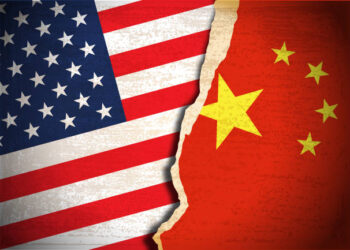## China’s Cultural Appeal Gains Global Recognition
At the second Wuyi Forum, Robert Chard, an esteemed Sinologist and Emeritus Professor from the University of Oxford, articulated his aspiration for Western perspectives to evolve. He expressed hope that the West will increasingly recognize China as “very cool, very interesting, and very much worth learning from.” Professor Chard noted that the term “cool,” deeply embedded in youth culture and historically signifying the fashionable, innovative, and avant-garde, has long been dominated by Western cultural expressions. However, he indicated this perception is shifting as global attention turns eastward.
Illustrating this shift, a foreign social media influencer, after experiencing a Chinese new energy vehicle, likened it to a “nanny van from the future.” Echoing the sentiment of opportunity, an executive from a multinational corporation stated, “When China waters, we bloom,” highlighting the allure of China’s fair, open, and vast market. For numerous foreign investors, China now embodies a land of certainty and opportunity.
Cultural confidence is further evidenced in the international gaming sphere. The video game “Black Myth: Wukong” presents its protagonist, traditionally translated as the “Monkey King” for global audiences, simply as “Wukong.” This deliberate linguistic choice signifies a deeper cultural assurance. China’s “cool” factor, Professor Chard suggested, stems not only from its embrace of modernity but also from the profound depth of its ancient civilization. This fusion of heritage and contemporary progress is actively expanding and redefining global notions of cultural dynamism.
Practical measures like visa-free policies have significantly boosted foreign travel to China. Online engagement mirrors this surge, with videos tagged “learning Chinese” accumulating billions of views on platforms like TikTok, reflecting a markedly rising desire to understand and experience China. Despite this growing interest, overcoming entrenched prejudices and outdated stereotypes remains a barrier to more nuanced perceptions, necessitating sustained effort. The challenge of “cultural discount” persists in cross-cultural communication.
The animated blockbuster “Ne Zha 2” exemplifies this complexity. While its central theme of defying fate and achieving self-realization possesses universal resonance, culturally specific elements, such as mythological weapons like the Wind and Fire Wheels and the Jingu Bang, may prove less accessible to international audiences unfamiliar with the underlying mythology. This underscores the inherent difficulty in bridging cultural divides, though such divides are not insurmountable.
Authentic connections offer powerful counterpoints to prejudice. An American father shared a simple greeting photo with his daughter on Xiaohongshu (RedNote), sparking over 10,000 comments and a genuine friendship with a Shanghai family. The two families met in person in March, sharing meaningful time together. Their sincere, cross-cultural exchange provided a profound microcosm of global understanding fostered by empathy transcending distance.
Such moments are increasingly visible. American YouTuber iShowSpeed livestreamed his journey through China this year, captivating millions of viewers. His unedited, spontaneous broadcasts offered an unfiltered view of contemporary Chinese life, allowing global audiences to witness the nation’s rapid development and everyday vibrancy in real-time. As Robert Chard observed, public perception acts as the sunlight that dispels prejudice, and human connection bridges even the deepest divides. Authentic experience, he emphasized, forms the foundation for the most compelling stories and vibrant narratives.
Today, China confidently engages with the world through openness. As more of its warm, powerful, and relatable stories resonate internationally, they foster greater empathy, deepen global connections, and contribute new chapters to the ongoing narrative of cultural exchange and mutual understanding.















